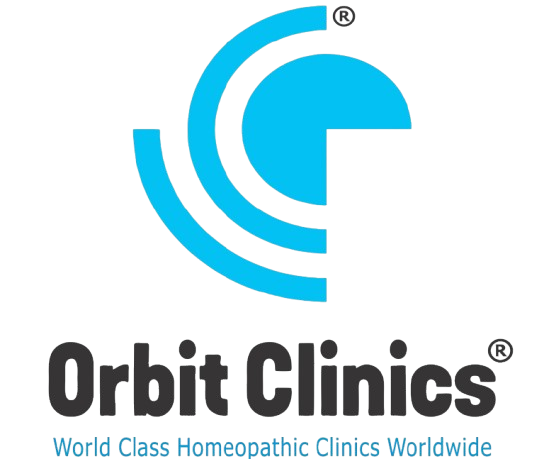Unlocking the Mysteries of Bartholin’s Cysts
(Understanding, Treating, and Overcoming a Common Yet Enigmatic Women’s Health Issue)
Written by

Dr. Deepak Sharma
BHMS, MD, Ph.D. (Scholar)
Homeopathic Physician and Educator
Founder – Orbit Clinics
Abstract:
This article provides a comprehensive overview of Bartholin’s cysts, a common condition affecting the female reproductive system. The Bartholin gland, a crucial component of female reproduction, is responsible for producing and secreting mucus that lubricates the vagina during sexual intercourse. Bartholin’s cysts form when the main excretory duct of the gland becomes obstructed, leading to enlargement and potential discomfort. Infections can cause the cyst to develop into a painful abscess. The article also explores various homeopathic remedies for treating Bartholin’s cysts, including Silicea, Belladonna, Calendula, Hepar Sulphuris Calcareum, and Pulsatilla, which aim to reduce inflammation, promote healing, and provide relief from associated symptoms.
Introduction:
Bartholin’s cysts are an enigmatic, yet relatively common, condition affecting the female reproductive system. While they are generally benign and often asymptomatic, they can cause significant discomfort and distress when they become infected or enlarged. In this article, we will delve into the anatomy and physiology of the Bartholin gland, discussing its role in the female reproductive system, and how it can give rise to Bartholin’s cysts.
The Bartholin Gland: A Crucial Component of Female Reproduction
The Bartholin gland, also known as the greater vestibular gland, is a small, pea-sized structure located bilaterally at the posterior part of the vaginal opening. These exocrine glands play a crucial role in the female reproductive system by producing and secreting mucus to lubricate the vagina during sexual intercourse. This mucus not only reduces friction but also creates a conducive environment for sperm to survive and travel.
Anatomy and Physiology of the Bartholin Gland:
The Bartholin gland is comprised of a network of acini, which are specialized cells responsible for secreting mucus. These acini are grouped together and enclosed within a connective tissue capsule, forming lobules. Each lobule is connected to a duct, which eventually coalesces to form a single, main excretory duct. This duct extends outward, measuring approximately 2.5 centimeters in length, and opens into the vestibule of the vagina.
The secretion of mucus by the Bartholin gland is predominantly controlled by the autonomic nervous system, with parasympathetic nerves stimulating production and secretion during sexual arousal. Estrogen, a female sex hormone, also plays a role in maintaining the gland’s function by promoting the growth and differentiation of glandular tissue and ducts.
Bartholin’s Cyst: Causes and Formation
A Bartholin’s cyst occurs when the main excretory duct of the Bartholin gland becomes obstructed. This blockage can result from various causes, including infections, inflammation, trauma, or even the accumulation of thick mucus. As the gland continues to produce mucus, the trapped secretion causes the gland to enlarge, forming a cyst.
Bartholin’s cysts can range in size from a few millimeters to several centimeters in diameter, and they are usually located on one side of the vaginal opening. While they are often asymptomatic, some women may experience pain, discomfort, or a noticeable mass in the affected area.
Risk factors for developing a Bartholin’s cyst include:
- Age: Women of reproductive age (typically between 20 and 30 years old) are more likely to develop Bartholin’s cysts.
- History of cysts or abscesses: If you have previously experienced a Bartholin’s cyst or abscess, you may be at a higher risk for developing another one.
- Sexual activity: Being sexually active might increase the risk of developing a cyst, as the glands produce fluid during sexual arousal, and this fluid can sometimes become blocked.
Symptoms of a Bartholin’s cyst may include:
- A painless lump near the vaginal opening: In many cases, a Bartholin’s cyst may not cause any pain and may only be discovered during a routine pelvic exam.
- Discomfort or pain during activities: You may experience pain or discomfort during activities such as walking, sitting, or having sex if the cyst is large or becomes infected.
- Redness or swelling: If the cyst becomes infected and turns into an abscess, the area around it may become red, swollen, and tender.
- Fever: In some cases, an infected cyst can cause a fever.
Complications:
If a Bartholin’s cyst becomes infected, it can develop into a painful abscess. In this case, the infection may be caused by various bacteria, including Escherichia coli, Staphylococcus aureus, or sexually transmitted pathogens such as Neisseria gonorrhoeae and Chlamydia trachomatis.
If you are considering homeopathy as a treatment option for a Bartholin’s cyst, there are several remedies that you may come across.
Here are some more detailed descriptions of these remedies and their applications:
- Silicea: This homeopathic remedy is frequently suggested for various conditions involving abscesses, cysts, and inflammation. Silicea is thought to assist in the expulsion of pus from the affected area, thereby promoting the healing process. In the case of a Bartholin’s cyst, Silicea may be recommended to help reduce inflammation and facilitate the removal of pus.
- Belladonna: Belladonna is commonly used in homeopathic treatments for conditions characterized by sudden onset and inflammation. It is sometimes recommended for alleviating the pain and swelling associated with a Bartholin’s cyst. Belladonna is believed to work by reducing inflammation and providing relief from the discomfort that often accompanies this condition.
- Calendula: Known for its wound-healing and anti-inflammatory properties, Calendula is employed in homeopathic medicine to encourage healing and minimize swelling. When used for treating a Bartholin’s cyst, Calendula is thought to aid in reducing inflammation and promoting the healing process, thereby providing relief from the associated symptoms.
- Hepar Sulphuris Calcareum: This homeopathic remedy is typically suggested for cases involving painful, inflamed, and infected cysts or abscesses. Hepar Sulphuris Calcareum is believed to be effective in reducing inflammation and facilitating the expulsion of pus, which can help to alleviate the pain and discomfort associated with a Bartholin’s cyst.
- Pulsatilla: Pulsatilla is a homeopathic remedy that is often recommended for addressing various issues related to the female reproductive system. In the context of treating Bartholin’s cysts, Pulsatilla may be particularly useful in cases where there is no infection present. This remedy is thought to help alleviate the symptoms of a Bartholin’s cyst by reducing inflammation and promoting healing.
References
- Marzano, D., & Haefner, H. K. (2008). The Bartholin Gland and Cyst. In L. S. Berek (Ed.), Berek & Novak’s Gynecology (14th ed., pp. 472-475). Philadelphia, PA: Lippincott Williams & Wilkins.
- Smith, R. L., & Rutherford, T. J. (2017). Anatomy and Physiology of the Vulva. In B. J. Hoffman, M. D. Lockhart, & J. A. Sterbis (Eds.), Comprehensive Gynecology (7th ed., pp. 123-131). Philadelphia, PA: Elsevier.
- Pundir, J., Auld, G., Chakravarti, S., & Manyonda, I. T. (2012). Bartholin’s cysts and abscesses. The Obstetrician & Gynaecologist, 14(2), 129-134. doi:10.1111/j.1744-4667.2012.12039.x
- Vazquez, J. A., & Sobel, J. D. (2016). Infections of the Female Reproductive System. In J. E. Bennett, R. Dolin, & M. J. Blaser (Eds.), Mandell, Douglas, and Bennett’s Principles and Practice of Infectious Diseases (8th ed., pp. 1397-1404). Philadelphia, PA: Elsevier.
- Lockie, A., & Geddes, N. (2000). The Complete Guide to Homeopathy: The Principles and Practice of Treatment. London, UK: Dorling Kindersley.
- Ullman, R. (2002). The Homeopathic Revolution: Why Famous People and Cultural Heroes Choose Homeopathy. Berkeley, CA: North Atlantic Books.
- Hershoff, A. (2000). Homeopathic Remedies: A Quick and Easy Guide to Common Disorders and Their Homeopathic Treatments. New York, NY: Penguin Putnam.




